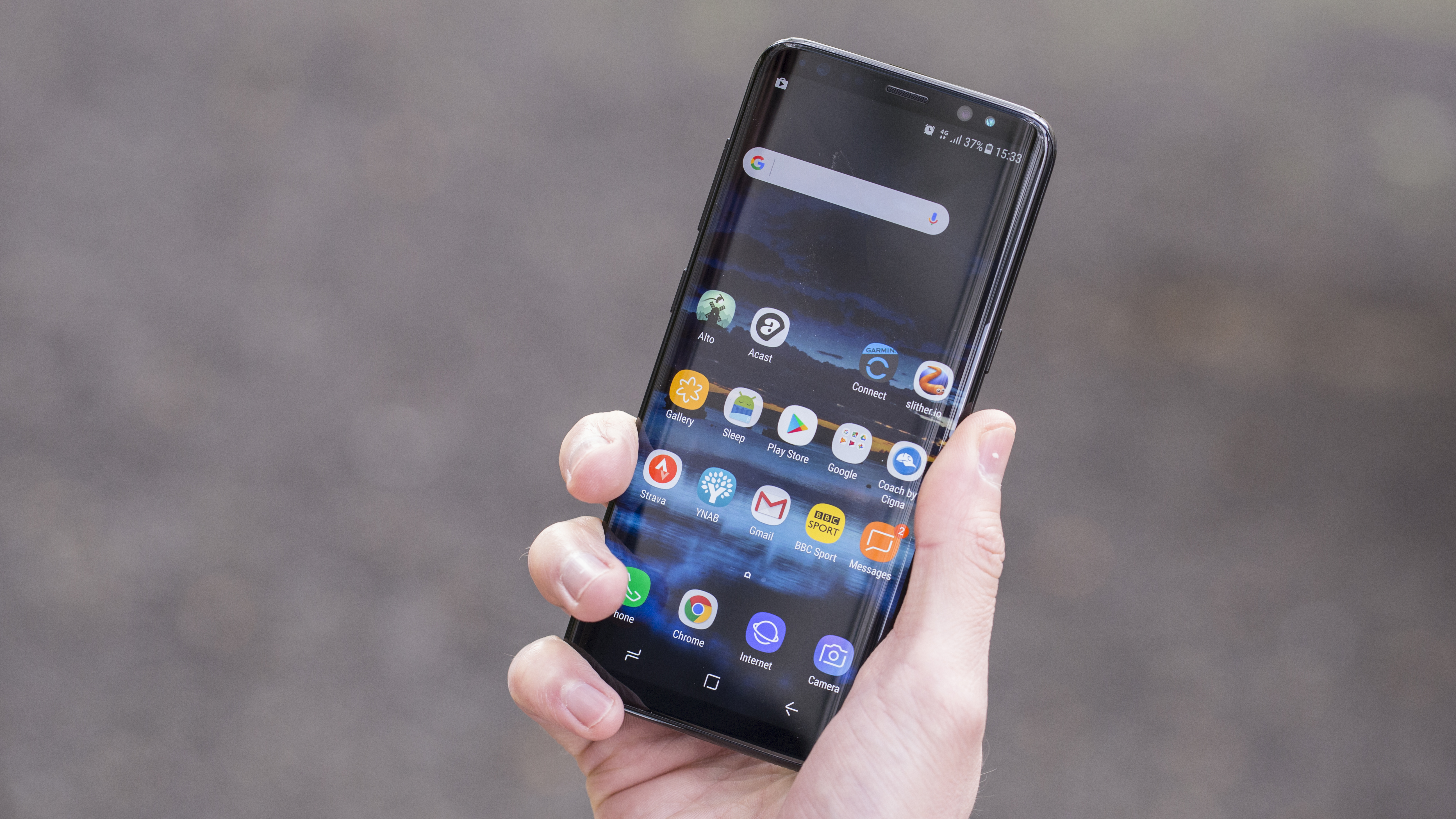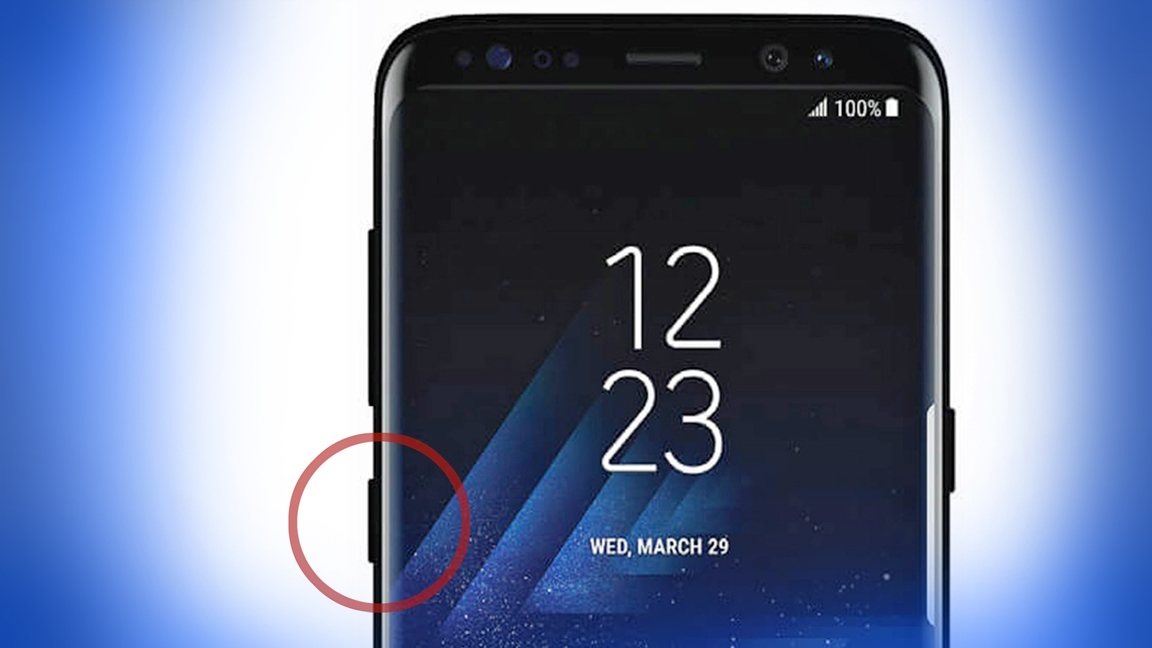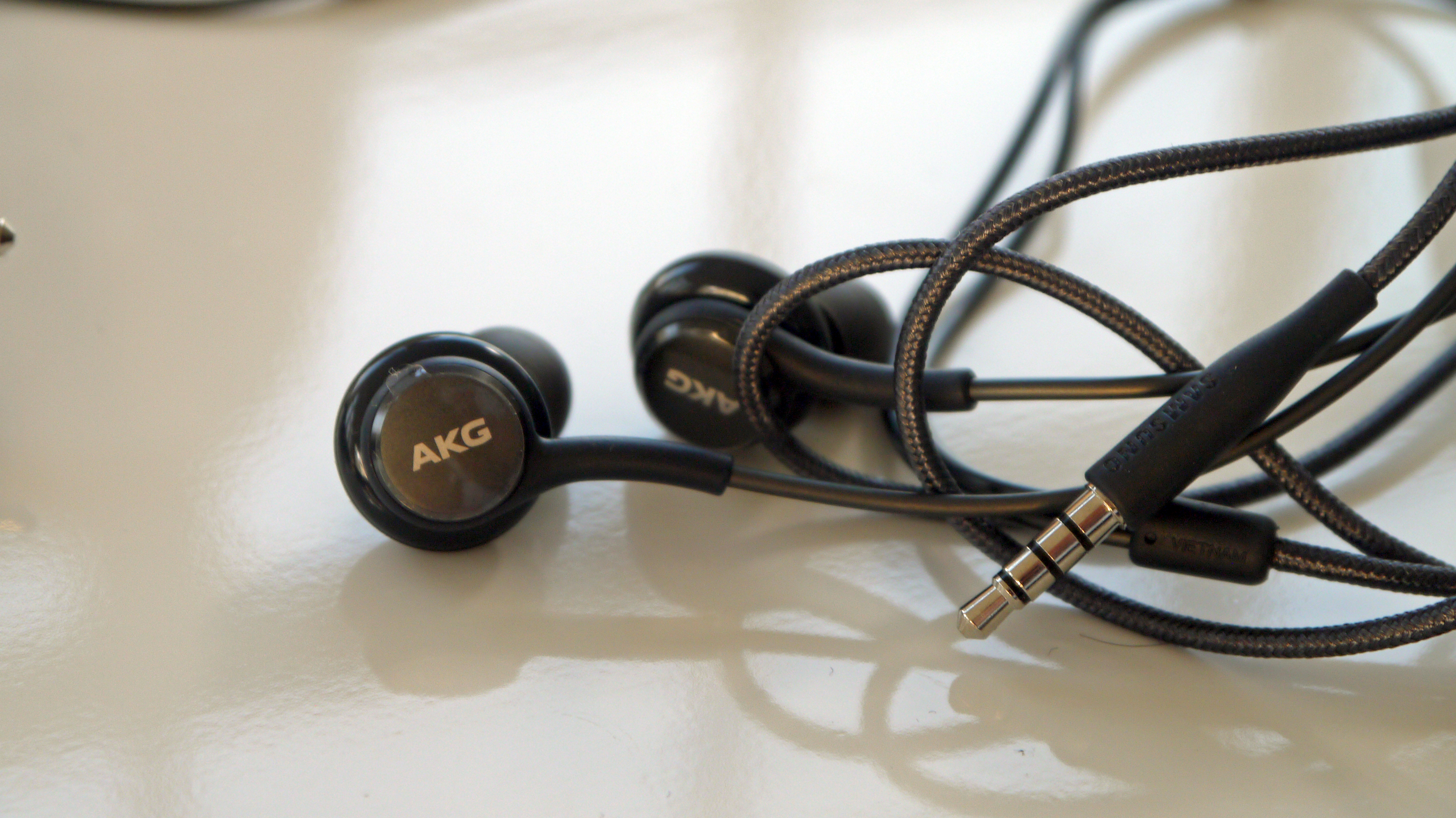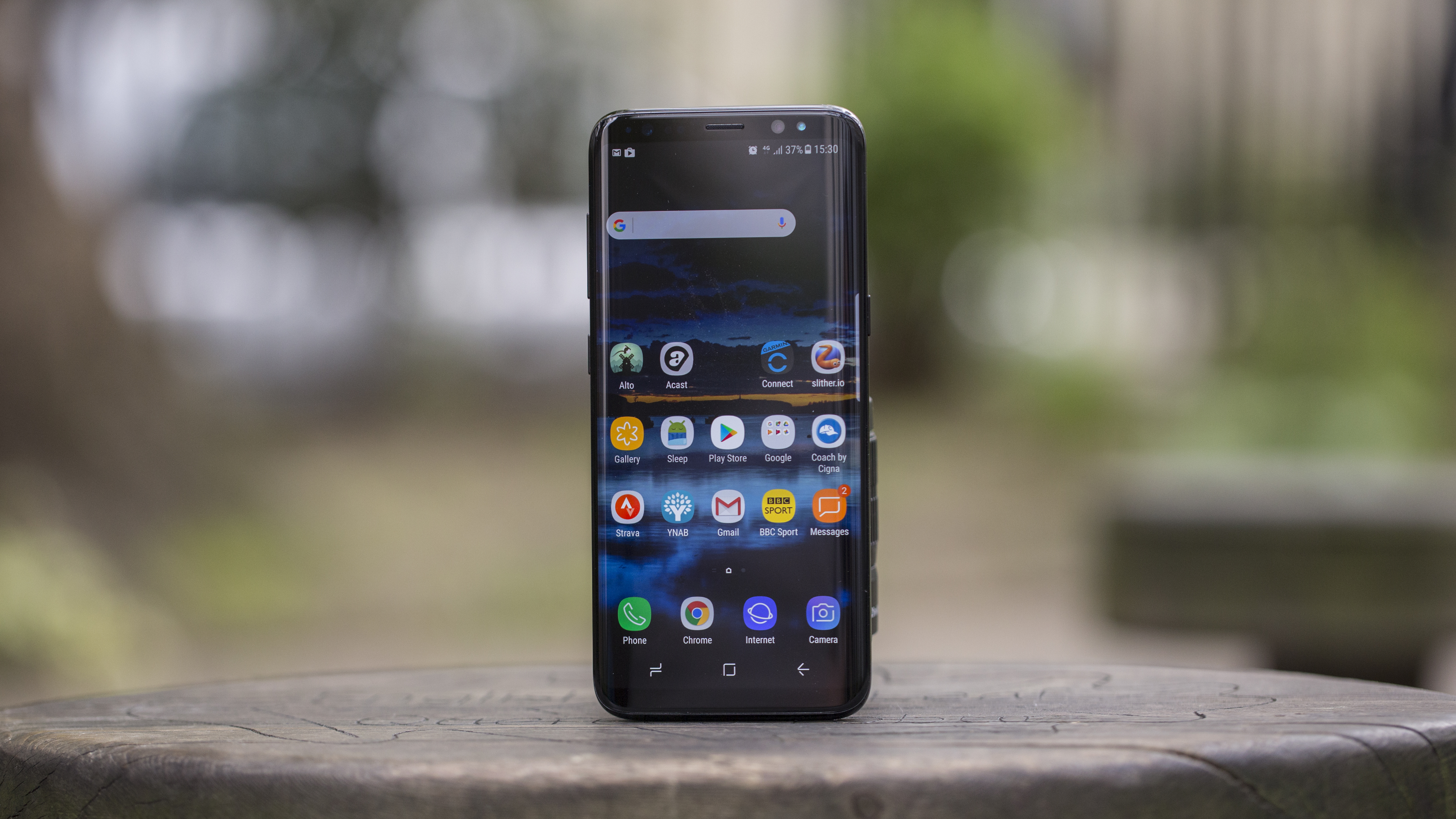Why you can trust TechRadar
- Premium design
- Headphone jack remains
The way the Samsung Galaxy S8 is put together has to be the defining feature of the handset. It looks like a phone that's been brought back from the future, a device that we've been crying out for a phone manufacturer to be brave enough to put together.
If you're coming to the S8 from the Galaxy S5 or S6, or switching from the iPhone 6, then you'll be genuinely amazed by a phone that would look thoroughly at home in a sci-fi movie.

The glass is curved on both sides, with the popularity of the Samsung Galaxy S7 Edge convincing the South Korean brand that the time is ripe to make all its flagship phones look rounded and glossy, with the Edge screen now there by default.
If you’re worried about accidental tapping on the side of the screen when using the phone, we found this didn't happen at all in our early tests.
The Edge features, where you can add in quick links to your favorite contacts or top apps, are neat... but we never remembered to use them.
But back to how Samsung has designed the Galaxy S8… it's just pure premium from start to finish. The way the front and back of the phone roll into the metal rim that sits around the outside of the phone is simply exquisite, and there's a real pleasure to be had when just rolling this phone around and around in your palm.
It's worth noting here that we have heard reports of the Samsung Galaxy S8 proving to be a big fragile when dropped, but it's not something we noticed in our testing.
Looking around the reports, it seems that the rear glass is more prone to dropping, but it's hard to tell if the instances are higher than usual or this is just a more popular phone.
The key thing is that it's glass front and back with less structural support than other devices, so if you're worried there are some good cases to check out.

The buttons are all well-crafted, and have a pleasant click and travel – and this year Samsung has both removed keys from and added keys to important parts of the Galaxy S8.
We've already questioned the need for a Bixby button on the left-hand side of the handset, but the fact it sits below the volume rocker is annoying.
When feeling for the volume rocker to turn music down it's very easy to hit that button instead and open up the Bixby information screen.

The power button on the right-hand side is well placed though – a good move to keep it separate and prominent. What’s odd here is that Samsung could have used this ‘clean’ side of the phone, devoid of anything other than this button, to accomodate the fingerprint sensor.
Sony’s placement of the fingerprint scanner in the power key is a sensible move, and if Samsung had done this on the S8 it would have avoided the irritation of the misplaced fingerprint scanner, and this would easily be a five-star phone.
But the rest of the way the phone has been put together is impressive. Samsung knows what it’s doing with phone design these days, and everything has been put in place to make the Galaxy S8 feel premium.
By sticking with the same style of camera sensor and not upgrading to a dual-sensor affair, the brand has been able to keep the back of the phone flat, with no bump.

This is much more attractive than previous versions of the phone, and apart from a small lip to differentiate the camera from the rest of the body (useful when searching for the fingerprint sensor) it’s flush to the back.
For some reason the heart rate monitor remains next to the camera - given the desire to make this phone as sleek as possible, surely that could have been up for the chop?
However, despite the Gorilla Glass on the rear of the phone, it does feel a little plasticky thanks to being so light and thin. It makes sense in terms of the phone design, but it’s not got the same pleasantly tactile feeling that metal has – and it’s here that phones like the iPhone 7 win out.
It’s also good to finally see a USB Type-C connection on the bottom of the phone – and a headphone jack alongside it.

It still feels weird talking about the inclusion of a headphone jack on a flagship phone as some kind of noteworthy achievement, but Apple has made both manufacturers and customers question the utility of the socket, and Samsung has defiantly told TechRadar that it sees the port as something consumers still need.
Already we’ve used two different pairs of headphones with the Galaxy S8, not including those in the box. Listen up, rest-of-the-phone-world: we don’t want to lose the headphone jack yet.
Screen
- Brilliant screen
- Far too tall to use with one hand
- Movies look amazing on it
It almost feels tiring saying this, given that we say it every year, but Samsung has yet again put the world's best screen on a phone – and trust us, that’s no mean feat.
The Samsung Galaxy S8 has what was at launch the most stunning display around, and while it's been proven factually through DisplayMate’s rigorous testing, it's also clear from the moment you pick up the new S8.
Other phones have arguably since beaten it, such as the iPhone XS and the Samsung Galaxy S9, but the S8 is still in the mix.
The colors are rich, the black and white contrast is immaculate, and everything just looks so pin-sharp. Streaming content in HD is a dream, and anything that's saved onto the device looks great.

Let's get a couple of obvious issues out of the way first though, beginning with the size: the 5.8-inch display is possibly too big.
We know that sounds like an odd thing to say when Samsung has put so much effort into cramming this massive display into a smaller form factor, but, thanks to the new 18.5:9 ratio, it's terribly long.
It’s similar to the 16:9 widescreen ratio most will be familiar with, but just a bit longer. This means the length of the screen is rather long, so you've got no chance of reaching the top right-hand side when you need to go back in an app – it's just too big for that.
Phew, that's the poorer stuff out of the way – let's get back to being chirpy about a sublime feature on this phone. Watching movies on this handset has to be one of the best experiences we've had, entertainment-wise, on a phone.

The way the screen arcs away at the side, combined with the longer display, means movies (which are shot in a 21:9 format) don't noticeably have the black bars above and below the display (well, they do, but they're almost hidden in the curves).
As a result, watching movies feels akin to doing so in a theater; it’s a far more immersive experience, and, when combined with the rich colors and contrast ratios, a completely joyous one.
It is a little annoying that you need to open the multi-tasking window and tap the ‘expand’ button to make some apps full-screen; some are set this way by default, but others haven’t yet been optimized by their developers, which is irritating, even at this early stage, as many users won’t be aware of how they can make Netflix look so much better.
The same goes for gaming: when you've got a title that would work better with more width to play with, the Samsung Galaxy S8 can scale it up nicely to fill the entire screen with some prodding.

Or alternatively, if the app you're using doesn't stretch the whole way across, you can use those black bars at the side to house some of the touchscreen controls (during fighting games, for instance) meaning your digits don't block the action.
Samsung is selling the Galaxy S8 as certified by the UHD Alliance, meaning it’s HDR-compatible… and thankfully we've got some content coming through on streaming services.
(HDR stands for High Dynamic Range and is used to describe incredibly vivid images through intelligent management of the brightness and colors in any display).

It’s a nice new feature, and now there’s mobile HDR content on Netflix or Amazon Prime Video it's much better. It's not earth-shattering, but is a boon compared to standard SD or HD videos.
On Netflix you do need to pay extra for the option though, which sucks a little.
The Samsung Galaxy S8 has 64GB of onboard storage along with a memory card slot, so you're not easily going to run out of space to hold your movies and other files – and with the powerful Exynos 8895 or the Qualcomm Snapdragon 835, this phone has enough power to plough through even the toughest of games.

In short, we loved everything about using the display on the Galaxy S8. The curved corners of the display make everything feel more immersive, and while the design of the phone means navigating through the interface can be something of a chore at times, the overall experience was stunning.
The audio experience was interesting though. There’s only a single speaker at the bottom of the phone, and while it's loud it’s rather tinny.
The bundled headphones are a lot better – AKG-tuned, they’ve got a big name behind them rather than just being generic headphones from Samsung.

In truth, they don’t sound a lot better than the buds you normally get in the box with Samsung phones, and the build quality is a bit light – they don’t feel like they offer a huge amount of bass when you hold them in your hand.
But the overall sound quality is fine. It’s better than that from Apple's EarPods, but not in the same league as the bundled headphones HTC chucks in its phones, for instance.
Current page: Design and screen
Prev Page Introduction, biometric issues and Bixby Next Page New TouchWiz and Galaxy S8 specs
Gareth has been part of the consumer technology world in a career spanning three decades. He started life as a staff writer on the fledgling TechRadar, and has grew with the site (primarily as phones, tablets and wearables editor) until becoming Global Editor in Chief in 2018. Gareth has written over 4,000 articles for TechRadar, has contributed expert insight to a number of other publications, chaired panels on zeitgeist technologies, presented at the Gadget Show Live as well as representing the brand on TV and radio for multiple channels including Sky, BBC, ITV and Al-Jazeera. Passionate about fitness, he can bore anyone rigid about stress management, sleep tracking, heart rate variance as well as bemoaning something about the latest iPhone, Galaxy or OLED TV.
